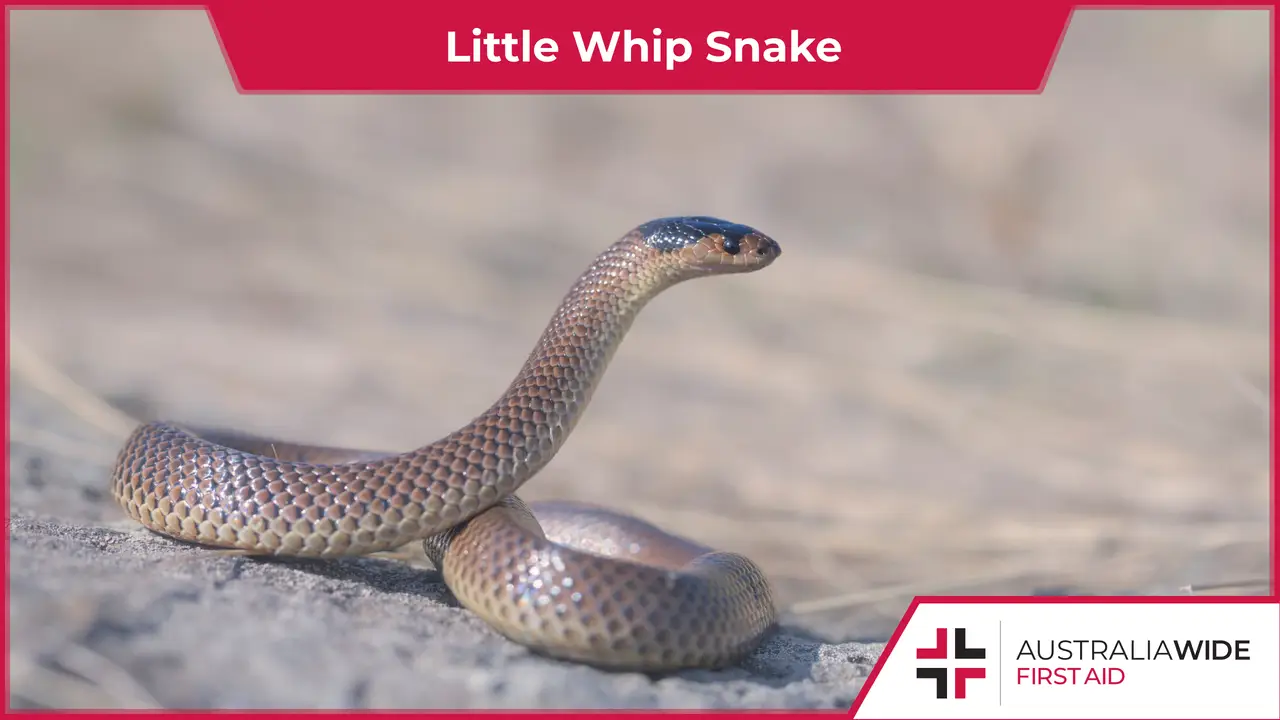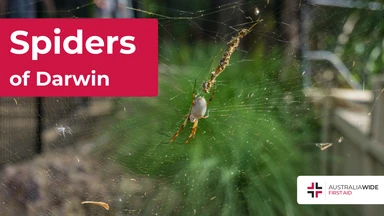Profile on the Little Whip Snake


The Little whip snake is one of the smallest members of the Elapidae family of snakes, of which Red bellied black snakes and Death adders are also members.
They have a wide distribution across south-eastern Australia, including the outer suburbs of Melbourne and Adelaide.
To help you avoid a run-in with these pint-sized reptiles, let's look at their characteristics and preferred habitat.
We also cover snake bites in our general and childcare first aid courses.
We have training locations in every state, capital city, and major town throughout Australia.
Head to our website to find and enrol in a first aid course near you today.
They are often mistaken for juvenile Brown snakes, which are similar in size and colour.
The Little whip snake (Parasuta flagellum or Suta flagellum) is distributed across south-eastern mainland Australia, from south west Victoria to south east New South Wales.
Their preferred habitat includes:
They typically shelter beneath rocks, logs, or partially embedded in the soil.
The Little whip snake is a carnivore and primarily feeds on small lizards and frogs.
Females are ovoviviparous and give birth to litters of roughly seven live young between September and February.
When confronted with a threat, Little whip snakes have been known to hurl their body about in a whip-like fashion and emit a foul odour.
And though they are venomous, their small size and venom dosage means that their bites generally only cause mild discomfort.
In saying that, it can be difficult to positively identify different types of snakes, as individuals of the same species can vary dramatically in colour, pattern, and size. As such, all snake bites should be treated as a medical emergency.
If you or someone else is bitten by a snake, call Triple Zero (000) for emergency services and apply a pressure bandage as part of the Pressure Immobilisation Technique.
Snake bites rarely cause fatalities due to the effectiveness of modern anti-venoms. Likewise, snakes will never go out of their way to attack you. In fact, most bites occur when a person attempts to approach, capture, or kill a snake.
As such, to reduce your risk of a snake bite - leave them alone. If you need a snake relocated from your home, contact a professional snake catcher, instead.
To get hands-on experience in treating snake bites, head to one of our general or childcare first aid courses.
We have training locations in every state, capital city, and major town throughout Australia.
Head to our website to find and enrol in a first aid course near you today.

March 11, 2025
Darwin, the tropical capital of Australia’s Northern Territory, is home to a rich diversity of wildlife - including an impressive array of spiders. From the sprawling webs of golden orb-weavers to the cryptic camouflage of trapdoor spiders, these arachnids play a vital role in the local ecosystem. While some may inspire fear, the majority are harmless and even beneficial, helping to control insect populations.

September 4, 2024
Cat bites, while often underestimated, can lead to serious health complications if not treated promptly and properly. Cats' mouths harbour a variety of bacteria that can cause infections in humans.

April 1, 2024
Encounters with wildlife can often be thrilling, but when it comes to the creature known as the drop bear, the experience can quickly turn dangerous. A sharp increase in recent attacks prompts the need for understanding proper first aid procedures in case of an attack.